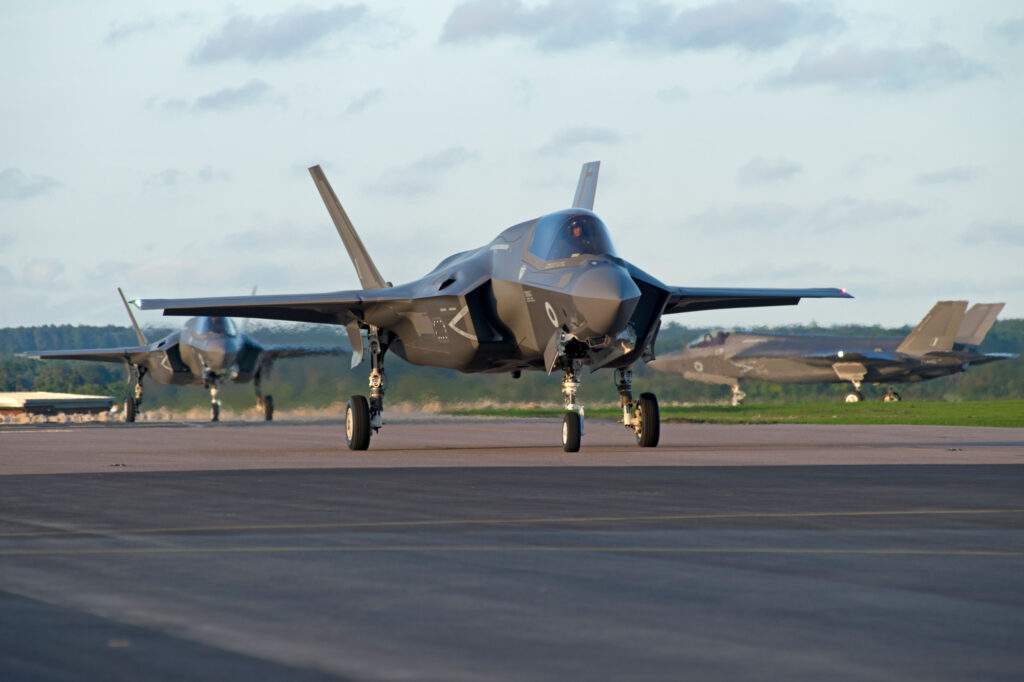The UK House of Commons Defence Committee raised concerns regarding the air power capabilities of the Royal Air Force.
These apprehensions stem from significant cuts in volume outlined in the 2021 Defence Command Paper, which despite their acknowledgment were not addressed in the Refreshed Defence Command Paper published in July 2023.
“We will need to act speedily to remove or reduce less relevant capabilities – and this will allow our new investment to be focused on the technologies that will revolutionize warfare, forging our military assets into a single network designed to overcome the enemy,” then Prime Minister Boris Johnson explained to the Parliament on November 19, 2020, while the review was in progress.
The report highlights that these cuts, rather than addressing national security concerns, have left the UK dangerously exposed in the face of heightened global threats, particularly in the wake of Russia’s full-scale invasion of Ukraine that the British Ministry of Defence defined as “the greatest threat to the open international order in decades.”
Quality over quantity
One of the key concerns raised in the report is the adequacy of the fighter fleet operated by the Royal Air Force and Royal Navy Fleet Air Arm.
“Whilst made up of highly capable aircraft, it is just too small to withstand the levels of attrition that would occur in a peer-on-peer war,” the report states. “The imminent retirement of the Tranche 1 Typhoon and continued slow force growth of the F-35 fleet will only exacerbate these shortcomings.”
The 2025 retirement of the 30 Typhoon Tranche 1 fighter jets currently in the sustainment fleet of the Royal Air Force was announced in early September 2021. It raised controversy as the fighter jets would be retired at just 42% of their useful life (2544.8 flying hours). The Tranche 1 variant of the aircraft, the eldest of the four developed, is limited to the use of air-to-air missiles and has very limited air-ground capabilities without the use of an external pod.
In the meantime, the initial plan to procure 138 Lockheed Martin F-35Bs, the Short Take-off Vertical Landing (STOVL) variant of the stealth fighter jet, was interrupted, with 48 aircraft ordered and 31 delivered. Negotiations for 26 more fighters have been launched in 2022.
The report also highlights the critical capability gap left by the retirement of the E-3D Sentry, which provided Airborne Early Warning & Control. The same committee had already used the troubled acquisition of its successor, the E-7 Wedgetail, as one of the case studies to call for urgent reform of the British procurement system, in a scathing report published in July 2023.
The initial order for the Wedgetail fleet, which stood at five aircraft, has been scaled down to just three units. This reduction in fleet size, meant to save costs, is now being questioned due to the substantial loss of capability it represents. Additionally, the deployment of these aircraft has encountered delays, creating “an important capability gap, especially in view of the war in Ukraine.”
The report also targets the early retirement of the C-130J Hercules, which occurred seven years before the planned deadline. In March 2021, the British Ministry of Defence announced the 14 C-130J Hercules Mk4 currently in the fleet of the RAF, which were to continue flying until the mid-2030s, would instead be retired by 2023 to make way for the Airbus A400M Atlas.
Michael Wigston, Chief of the Air Staff at the time, said he was satisfied with the performance of the A400M during the evacuation of Afghanistan by the Royal Air Force, named Operation Pitting. The retirement which took place on June 14, 2023, was described by the report as a blow to the RAF’s air mobility capabilities, with consequences for humanitarian and special forces missions.
“The RAF’s combat aircraft fleet now provides a boutique high capability: it lacks numerical depth and has an inadequate attrition reserve. Exquisite capability has its place, but in a peer-on-peer conflict such as a shooting war with Russia, every airframe will count,” the report summarized. “The MoD and RAF must consider as a matter of urgency how they can increase combat air mass in the short term.”
